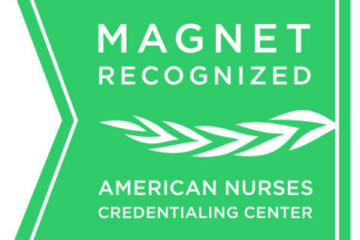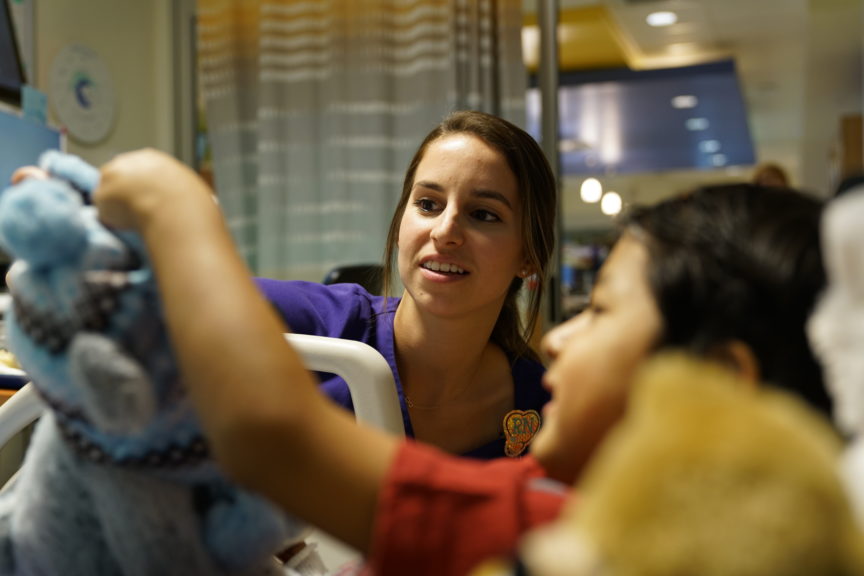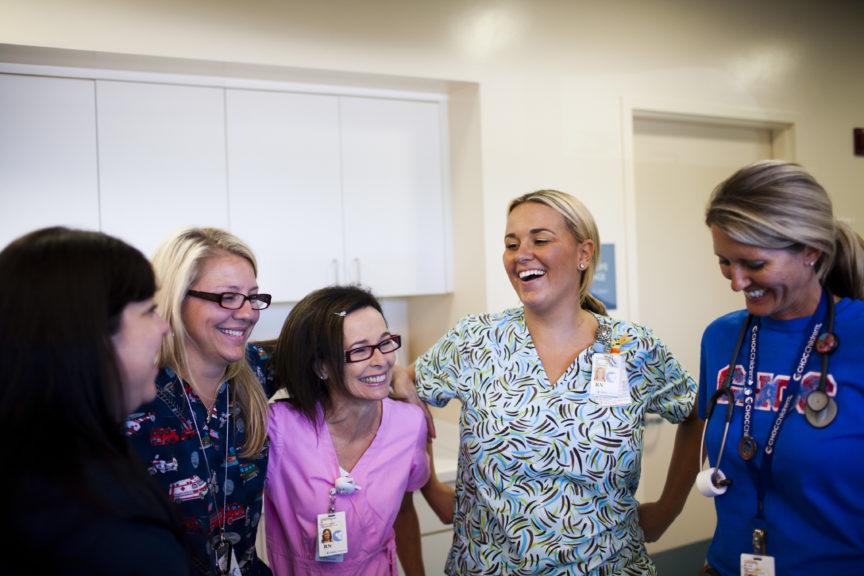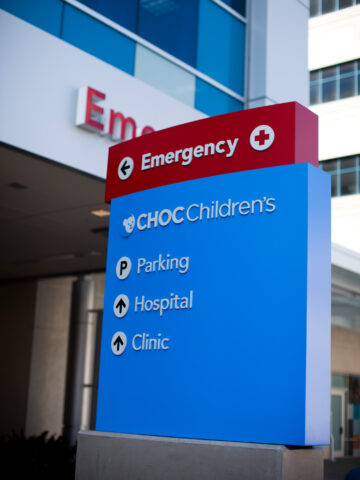In honor of National Nurses Week (May 6-12), Melanie Patterson, DNP, MHA, RN, vice president, patient care services and chief nursing officer of CHOC Hospital, shared a few nursing highlights from the past year. CHOC nurses work in a variety of roles, from direct patient care to informatics. They partner with our pediatricians and pediatric specialists, as well as other staff, to advance care and safety for our patients and their families. Learn more about their most recent contributions in this Q&A with Melanie.

CHOC received numerous accolades for patient care and safety; among them Magnet® recognition. What does this honor really mean?
This is our third time achieving Magnet recognition, reflecting our commitment to high-quality nursing practice. This is truly an honor and places us in an elite group of healthcare organizations; fewer than 500 (out of more than 6,300) hospitals in the country have achieved Magnet recognition.

To earn this distinction, we passed a rigorous and lengthy process that required widespread participation from leadership and staff. We are a much better organization because of our Magnet recognition, which raised the bar for patient care and inspired every member of our team to achieve excellence every day.
CHOC has taken a leadership role in developing a pediatric system of mental health care in Orange County, with an inpatient center as its centerpiece. Do you have any updates to share?
Our Mental Health Inpatient Center opened last April, filling a gap in a fragmented system that left children younger than 12 with no inpatient services in Orange County. The innovative facility, which features a warm, healing environment, is the only one in the state to offer all private rooms and an option for parents to stay overnight with their child, as appropriate. We’ve admitted more than 600 children since we opened and achieved an 86 percent positive rating in our patient experience survey. In addition, our restraint and seclusion rates are far below the national average, as is nurse turnover. The Center’s team has worked hard to create the right combination of “people, place and practice” to promote the best outcomes for our patients and their families.
How has nursing contributed to evidence-based practices?
Evidence-based practice (EBP) is a dynamic process of integrating research, credible sources of knowledge, clinical expertise, and patient and family preferences and values to achieve optimal patient outcomes, enhance practice, and manage health care costs. We developed an EBP Scholars program that is a formal six-month long program funded in part by the Walden and Jean Young Shaw Foundation. Scholars receive education about the EBP process and guidance in developing their own projects focused on improving outcomes. Results have included an increased number of external poster and podium presentations, and nurse-led projects submitted for research consideration and peer-reviewed nursing publications. In addition, six nurse-led projects were awarded grants for projects that resulted in meaningful change, increased patient safety, and decreased cost of care.

How involved have nurses been in research projects?
We encourage a culture of inquiry among our nurses. Our Nursing Research and Innovation Council promotes the integration of research, and innovation into practice, and facilitates nurse involvement in related activities across the organization. Our Nursing Research Associate Training Program provides a meaningful and relatable approach to empower nurses, at all levels, to participate in multidisciplinary research. Participants attend classes and receive hands-on training with a clinical research coordinator.
One example of nurse-led research was focused on pupillary assessment (examining pupils’ reaction to light). This is important in neurological evaluations because changes in the size, equality and reactivity of the pupils can provide vital diagnostic information. Evidence suggests that the traditional pen-light pupil examination is subjective and has low precision and reproducibility. Automated hand-held pupillometers have recently been used to provide more objective measurements of pupillary size and reactivity. Studies suggest early detection of subtle changes using pupillometers may improve patient outcomes in adults, yet there is not much literature on its use in children.
Over the past few years, our nurses have established an organizational database of automated pupillometry to provide evidence for the use of pupillometers in children. Findings from a preliminary study were presented at the American Association of Neuroscience Nurses national conference in Denver, Colorado this past March and demonstrate a statistically significant inverse relationship between pupillometer readings and increased intracranial (inside the skull) pressure. We have since expanded the use of pupillometers in our emergency department and started additional multidisciplinary studies.
How have your nurses taken leadership roles in advancing patient safety throughout the hospital?
CHOC nurses have initiated and/or been asked to participate in numerous quality improvement projects focused on enhancing patient safety. I am especially proud of our team of safety coaches whose roles are to reinforce ― often through real-time feedback ― safe practices. This team now consists of 88 clinicians from more than 25 different areas across our entire healthcare system.

Additionally, we recently created the role of discharge nurse navigator whose focus is on successfully transitioning patients from the hospital to their homes. This includes educating families on after-care instructions and any other follow-up recommended by their physicians. The ultimate goals are decreasing readmission rates and improving patient and family satisfaction. We’ve seen our seven and 30-day readmission rates decrease beyond our initial goals and patient/parent satisfaction regarding nurse communications increase.
What makes CHOC nurses so unique?
Obviously, I am biased and think our nurses are the best in the profession. Every day, I have the privilege of witnessing the countless ways they preserve the magic of childhood. They are compassionate advocates for our patients and families, and proactive in implementing positive change that improves the care and service we provide. They are also collaborative, partnering with our physicians, each other and staff from across the entire healthcare system. They are committed to nursing excellence in everything they do, and selflessly dedicated to advancing our mission and our vision. I am incredibly fortunate to lead such an amazing team.




